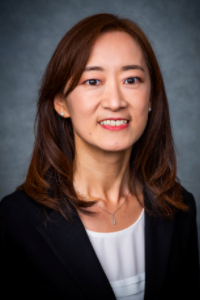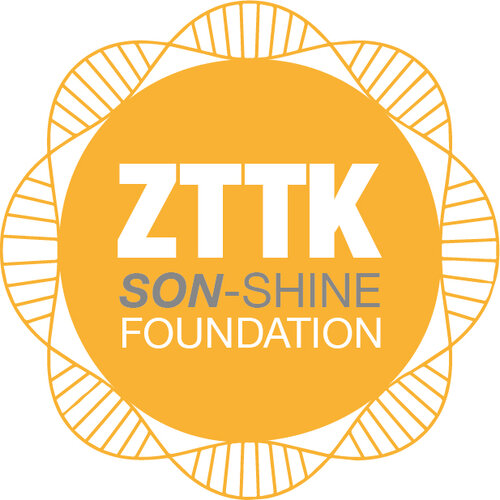Erin Eun-Young Ahn, Ph.D., Associate Professor, Division of Molecular & Cellular Pathology, has been working with the SON protein and gene since her early days of her career as a researcher at the University of California in San Diego. At the time, she had no idea her work would lead to the possibility of a possible medical treatment for a very rare disease.
 Erin Eun-Young Ahn. Ph.D., Associate Professor
Erin Eun-Young Ahn. Ph.D., Associate Professor
Zhu-Tokita-Takenouchi-Kim Syndrome, or ZTTK, is a rare disease caused by a genetic mutation of the SON gene, characterized by moderate to severe intellectual disability and developmental delays affecting systems throughout the body, including the cardiovascular, genitourinary, musculoskeletal, nervous, and digestive systems, among others.
Ahn recently celebrated the establishment of the ZTTK SON-Shine Foundation, an organization designed to recognize the syndrome and increase awareness of it. She serves as the group’s primary researcher.
A Protein/Gene Anomaly
In the early 2000s, Ahn was a postdoctoral fellow working in her mentor’s lab at UCSD, studying leukemia. At that time her team isolated the SON protein while conducting a screen to identity protein-protein interactions in leukemia cells, but were unsure how it was associated with leukemia, they just knew, “the gene looked very interesting,” she says.
“At that time I solely studied the cell and the molecular biology aspect because no one knew the protein’s function in the cell, or what occurs if SON is missing,” Ahn says.
She and her team began searching for information or literature about the gene and found, “almost nothing but a few papers in Russia.” But the gene, “seemed important to cell survival,” Ahn recalls. “Many other anecdotes encouraged me to study this. I didn’t give up because I was so curious about why we have SON in our cells.”
The SON protein is important in RNA editing, in the splicing step, she explains. “The SON is one of the splicing factors that cut and connect the RNA—an accessory factor, that is very selective. It can make a difference or an error in the -RNA splicing process.”
Early Findings, Many Questions
Ahn first started at the UAB Department of Pathology in the former Molecular Cellular Pathology Graduate Program in 1998, pursuing her Ph.D. in cancer biology. Birmingham was the first place she had been in the United States, having come from her native South Korea after completing her undergraduate and graduate studies there. After she completed her Ph.D. under former department chair Dr. Jay McDonald, Ahn moved to San Diego for postdoctoral training. In 2012 she took her first faculty position as an assistant professor at the University of South Alabama, Mitchell Cancer Institute.
When she established her own lab at USA, Ahn continued studying the SON protein’s function in the cell and the structure of the gene. Other researchers began looking at the expression of SON in different cancers and found many ties—to breast, pancreatic cancers—and some publications began coming out on the overexpression of SON. Ahn kept current with the work and continued her studies.
Throughout her time in Mobile, Ahn kept ties with and continued to visit her former UAB colleagues.
“Whenever I visited, I felt like I was coming back home and wanted to return. Also, I was amazed by how much UAB research had grown since I left,” Ahn says.
Patient Zero
One day in 2014, a physician from California contacted Ahn about a pediatric patient, a young girl 4 or 5 years old, suffering from developmental and intellectual disabilities. These included late milestones in language and cognitive processing. The physician had found Ahn’s postdoctoral research publication showing that SON function is important in RNA splicing. . They reached out to her mentor, who was no longer studying SON, who forwarded the message on to Ahn.
“Of course, the parents really wanted to know why,” she says. The girl underwent standard genetic testing panels, and then tests for gene mutations on known genes, which all came back normal. Finally, the doctors ran exome sequencing—a test developed in the last decade that can identify more undiscovered variants in an unbiased way.
“The only gene mutation she had was in the SON gene,” Ahn says.
This was the first finding of this specific gene mutation in humans, Ahn says. “We knew that SON is overexpressed in cancer cells, but we didn’t know whether the mutation really existed in the human patient. It was really eye opening.”
Ahn made a case report on this single patient, showing how in cancer there is an overproduction of SON, and with an underproduction, there are developmental and intellectual delays. The journal to which she submitted the work suggested she locate other cases. With the assistance of a website tracking undiagnosed diseases and gene mutations, Ahn found a few more incidents. She reached out to those patients’ physicians and the involved researchers, finding they had the same symptoms as her original pediatric patient.
“We went from one case to five cases,” she says, “and a few months after that the information spread. Clinicians and genetic counselors started talking, and the information became international.”
The mutations are de novo--they show up during development but are not inherited from the parents—which is why awareness of the syndrome by clinicians is key to connecting patients with resources, Ahn says. “They have to talk to their doctor and a genetic counselor and get the exome sequencing done to get the diagnosis.” The ZTTK syndrome is named for four of the primary researchers of the two original studies on the mutation, published in 2016, as well as two other case reports
Through continued work in the lab, as well as networking with other researchers, clinicians and genetic counselors around the world to find additional cases, Ahn’s group eventually developed a database of 20 patients, in 2016. From those, they were able to process samples, translating the research from cell-level biology to humans.
“Parents whose kids have this don’t know why, so now if we can do the exome sequencing, they do,” Ahn says. “This is the very first group of patients in the world to get the correct diagnosis.”
In her role as one of the world’s primary researchers on the SON gene, Ahn became a point of contact for patients and their families, collecting their contact information if they wished to connect with one another. This contact led to the establishment of a Facebook group for the syndrome, which now has more than 245 members, some of whom reached out to Ahn and indicated an interest in participating in future research.
Next Steps
In 2020, several of the parents of children, together with Ahn, created the ZTTK SON-Shine Foundation, which is seeking nonprofit status. The group developed a website that features the personal stories of families learning how to live with this syndrome.
In addition to connecting families with this challenging rare disease, the Foundation hopes to host events to spread awareness of the syndrome to clinicians in particular.
“It’s very important for them to know about it, so that if they have similar cases, those patients can reach a diagnosis,” Ahn says. “They’re looking for a variation indication—how amino acids change, for example—and when patients receive those, they don’t understand what it means.”
Ahn returned to UAB’s Department of Pathology in February of 2020 as an associate professor. She is no longer alone in the study of ZTTK, but working with researchers across the globe on different manifestations of this syndrome in patients, from issues ranging from bone development to kidney function to metabolism and the immune system.
“We hope some part of our finding will contribute to a medical treatment,” Ahn says, “and we know our finding can provide them with information. We don’t know whether we can find a cure, but if we know more about how SON mutation affects patients’ metabolism, kidney issues, bone structure, and immune system, we can do a lot for patient care and prevention, and to alleviate their symptoms,”
“These parents are amazing, they are so dedicated,” she says of the Foundation’s families.” They want to make a difference for the future. It is really a family organization, and I want to continue to be a part, to provide more research and answers to their questions.”
Visit https://zttksonshinefoundation.org/ to learn more about the ZTTK SON Shine Foundation and the families and researchers behind it.